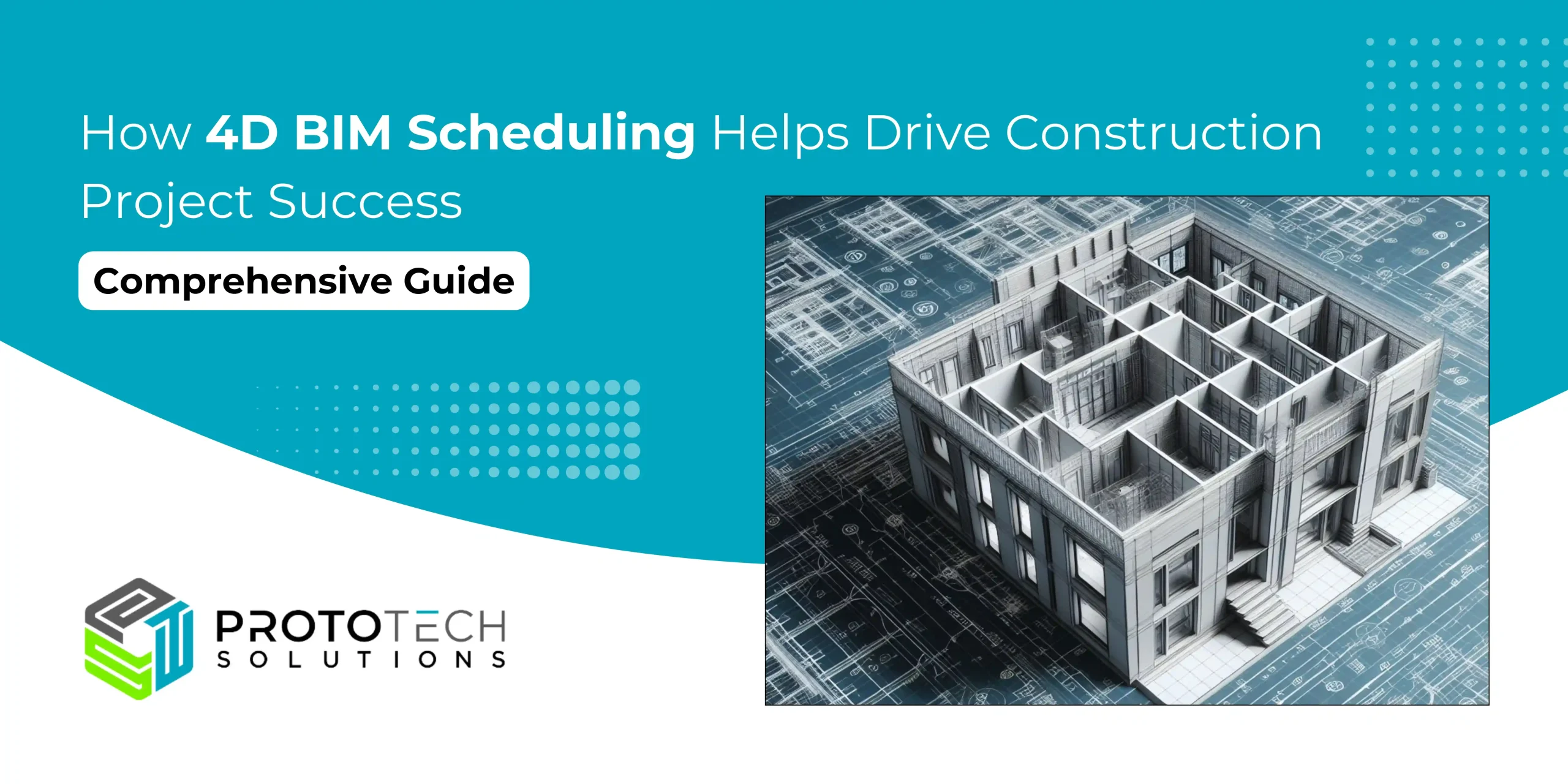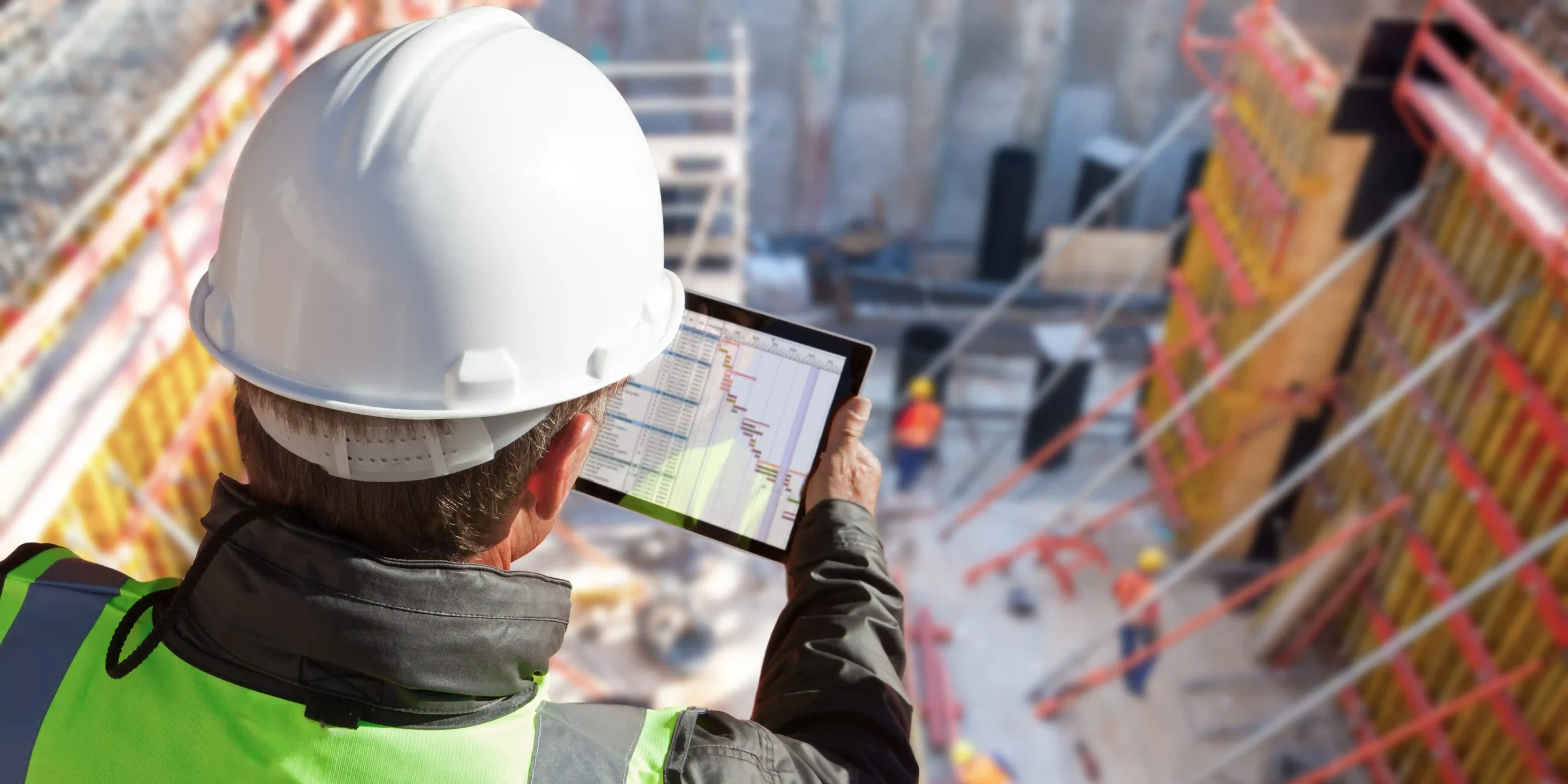How 4D BIM Scheduling Helps Drive Construction Project Success
How 4D BIM Scheduling Helps Drive Construction Project Success

What are BIM Dimensions?
A Building Information Modeling (BIM) dimension refers to different levels of information of data integration in a BIM model. BIM is a digital representation of the physical and functional characteristics of places (e.g., walls, floors, architecture, etc.), which allows architects, engineers, and construction professionals to design and manage buildings and infrastructure more effectively. These dimensions represent various layers of data and information associated with a building or infrastructure project. The concept of BIM dimensions helps to organize and categorize information within the model, providing a structured framework for collaboration, analysis, and decision-making throughout the lifecycle of a construction project. Let’s examine some of the most commonly referenced BIM dimensions and highlight their key differences across the industry. We will take a closer look at each of these dimensions.
There are typically four main dimensions in BIM:
- 3D (Spatial Dimension): This is the basic dimension where the model represents the physical geometry of the building or infrastructure project in three dimensions. It allows stakeholders to visualize the structure from various angles and perspectives.
- 4D (Scheduling): In addition to the 3D model, the 4D dimension adds the element of time. It involves linking schedule information or timelines to the BIM model, allowing stakeholders to visualize the construction sequence and project timeline. This helps in planning and managing construction activities more efficiently.
- 5D (Cost Dimension): The 5D dimension integrates cost information with the 3D BIM model. It involves associating cost data with different components of the building or infrastructure project, allowing stakeholders to analyze the cost implications of design decisions in real-time. This helps in budgeting, estimating, and controlling project costs.
- 6D (Sustainability Dimension): The 6D dimension adds sustainability information to the BIM model. It involves integrating environmental and energy performance data into the model, allowing stakeholders to assess the environmental impact of design decisions and optimise building performance over its lifecycle. This helps in achieving green building certifications and meeting sustainability goals.
Some sources also mention additional dimensions such as 7D (Facility Management) and 8D (Health and Safety), which further extend the capabilities of BIM beyond the design and construction phases to facility management and ongoing operations. 9D BIM is a term often used in the context of lean construction. Its purpose is to utilize data from Building Information Modelling (BIM) to reduce inefficiencies and waste in construction projects by implementing lean principles such as value stream mapping. However, some people believe that 9D BIM covers a wider range of areas, including resource management and procurement.
What is 4D scheduling in BIM?
4D scheduling in Building Information Modeling (BIM) refers to the process of integrating a project’s construction schedule with its 3D BIM model. This adds the dimension of time to the 3D model, creating a comprehensive visual representation of the construction sequence over time. Essentially, it involves linking the project schedule to the virtual 3D model of the building or infrastructure project. This dynamic model allows project managers to visualize the sequence of construction activities, identify potential clashes or delays, and optimize resource allocation.
In the realm of construction project management, efficiency, accuracy, and timeliness are paramount. With the advent of Building Information Modeling (BIM), the industry has seen a revolution in how projects are planned, executed, and completed. Among the various dimensions of BIM, 4D BIM scheduling stands out as a game-changer, offering a dynamic approach to project management that integrates time as the fourth dimension. In this blog post, we delve into the intricacies of 4D BIM scheduling and how it drives construction project success.
Benefits of 4D BIM Scheduling

- Enhanced Visualization
One of the primary advantages of 4D BIM scheduling is enhanced visualization. By integrating the construction schedule with the 3D model, stakeholders can visualize the progression of the project fully. This visual representation fosters better communication and collaboration among project teams, subcontractors, and clients. It allows stakeholders to identify potential conflicts or bottlenecks early in the planning stage, enabling proactive decision-making to mitigate risks and ensure project success.
- Improved Coordination
Effective coordination is critical for the smooth execution of construction projects. With 4D BIM scheduling, project teams can synchronize various activities and trades, ensuring optimal sequencing and resource utilization. By identifying dependencies and clashes in the schedule beforehand, teams can streamline workflows, minimize delays, and prevent costly rework. Moreover, real-time updates enable project managers to adapt to changes quickly, maintaining project momentum and keeping stakeholders informed throughout the process.
- Streamlined Construction Phasing
Every construction project involves multiple phases, each requiring precise planning and execution. 4D BIM scheduling facilitates the visualization of construction phasing, allowing project teams to sequence activities efficiently and optimize the use of resources. Whether it’s site preparation, foundation work, structural erection, or finishing touches, 4D BIM enables stakeholders to coordinate seamlessly across different phases, minimizing downtime and maximizing productivity. This streamlined approach not only accelerates project delivery but also enhances overall project quality.
- Risk Mitigation
Construction projects are inherently complex, with numerous variables and uncertainties that can impact timelines and budgets. 4D BIM scheduling serves as a powerful risk mitigation tool, enabling stakeholders to identify and address potential risks before they escalate into major issues. By simulating various scenarios and analyzing the impact of changes in real-time, project teams can devise contingency plans and proactively manage risks throughout the project lifecycle. Whether it’s adverse weather conditions, supply chain disruptions, or design changes, 4D BIM provides the agility and foresight needed to navigate unforeseen challenges effectively.
- Cost Savings
In the construction industry, time is money. Delays or inefficiencies in project scheduling can result in significant cost overruns and lost revenue opportunities. 4D BIM scheduling helps mitigate these risks by optimizing project schedules and minimizing downtime. By streamlining workflows, reducing conflicts, and improving resource allocation, projects can be completed more efficiently, leading to cost savings for all stakeholders involved. Additionally, the ability to visualize and analyze the project timeline allows for better budget forecasting and allocation, ensuring financial transparency and accountability throughout the project lifecycle.
Conclusion
In conclusion, 4D BIM scheduling offers a holistic approach to construction project management, integrating time as the fourth dimension to enhance visualization, coordination, and risk mitigation. By leveraging the power of BIM technology, project teams can streamline workflows, optimize resource allocation, and drive project success from conception to completion. As the construction industry continues to evolve, embracing innovative tools like 4D BIM scheduling will be essential for staying competitive and delivering projects on time and within budget.
Think of ProtoTech Solutions for 4D BIM scheduling for Construction Needs
With technological advancements and evolving use cases for Building Information Modeling (BIM), the benefits of utilizing models in the entire construction lifecycle are increasing. However, what does the future of BIM hold for professionals in architecture, engineering, and construction (AEC), and which areas can they maximize the benefit most?
At ProtoTech Solutions, we believe BIM improves access for everyone. It’s beneficial for design teams, but it’s also a powerful tool for those in the field. Equipping field teams with advanced BIM tools promotes collaboration and data transparency, ensuring alignment throughout the project and beyond.
When it comes to addressing the intricate scheduling demands of construction projects, ProtoTech Solutions stands out as your premier choice. Our expertise lies in delivering cutting-edge 4D BIM scheduling services that precisely cater to your construction needs. With our innovative approach, we seamlessly integrate time-based scheduling into the BIM model, providing you with a comprehensive visualization of your project’s progress over time. From initial planning stages to project completion, ProtoTech Solutions ensures that your construction timeline is meticulously mapped out and efficiently managed. Trust us to optimize your project scheduling, enhance collaboration among stakeholders, and ultimately streamline the construction process. Choose ProtoTech Solutions for unparalleled expertise in 4D BIM scheduling, and experience the difference in project efficiency and success.
